CIPAF
This article, which describes an experience of working in the poor neighborhoods of Santo Domingo, is contributed by CIPAF—the Centro de Investigacion para la Accion Feminina (Research Center for Women's Action).
Socioeconomic Context
The Dominican Republic, part of the Greater Antilles, lies in the Caribbean Sea between Cuba and Puerto Rico. It shares with Haiti the island of Santo Domingo de Guzman and occupies an area of 48,442 square kilometers. According to the most recent census, the total Dominican population is 5,647,977, of whom 50.15 percent are men and 49.85 percent women.1 The economically active population has been calculated as more than two million, of whom fully 600,000 are unemployed.2
The concentration of wealth in the hands of a few families, the centralization of land ownership, and the extensive subdivision of small and medium-sized holdings are some of the principal socioeconomic characteristics of the country. A striking illustration is that the holdings of more than 180,000 peasant families average less than half a hectare (1.2 acres) of land.3
The export of such products as sugar, coffee, cocoa, and tobacco play a major role in the Dominican economy, with sugar as the leading export product. Dependency on every level is one of the overriding characteristics of the Dominican nation. This dependency is most evident in the realm of economics; the foreign debt, for example, has risen to $4.2 billion.4
In recent decades the country has suffered an extremely rapid process of urbanization. Twenty-three percent of the Dominican population resides in the capital, Santo Domingo, forming the country's greatest concentration of people.
While Santo Domingo occupies an area of 158,438 square kilometers, 64.65 percent of the population, most of whom belong to the popular sectors, is crowded into 18.62 percent of the city's land.5 The remaining area is occupied by 35.35 percent of the population.
Most residents of the capital live in poor neighborhoods but have their roots in the countryside, where the dominance of latifundios (large plantations), the instability of agricultural markets, and the lack of credits and technical assistance have brought about a collapse in production. The rural population, lacking access to the resources necessary to their survival, have become more and more impoverished.
Within the poor urban neighborhoods, overcrowding and extreme poverty are all too common. There are some ninety-three such neighborhoods or barrios in different sections of the capital, particularly in the northern district.
There is a severe housing shortage and most of the urban poor live in dwellings that lack minimally healthful conditions. According to the Institute for Population and Development Studies, 55 percent of poor families do not own their homes, but rent them.
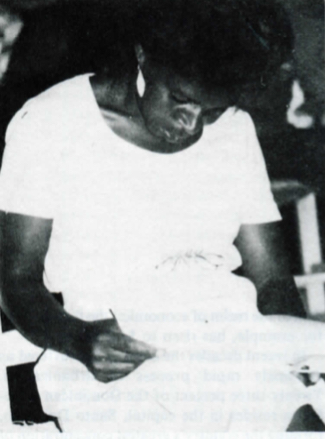
In this precarious situation, urban dwellers are forced into a broad array of activities that involve the entire family in the struggle to maintain and reproduce the labor force. In most cases, the family's meager income cannot cover basic survival needs. In 1985, the country's inflation rate rose to 40.4 percent.6
Unemployment, unpaved streets, the shortage of schools and hospitals, the high cost of living, the lack of recreational areas, and a public transit system that is inadequate or nonexistent: such conditions form the constant background of existence for the urban poor. In this setting the social inequality of the Dominican Republic is revealed in all its crudity.
The social composition of the urban poor neighborhoods is extremely varied. One may find government employees such as janitors, office workers, messengers, or drivers; industrial and commercial workers; or street vendors selling clothing, fruit, vegetables and the like.
Against this background of unemployment, inflation, and the lack of social services, women's burden is all the greater, since women are responsible for managing the household, meeting the health needs of children and the sick, and feeding their families. It is this very situation that has impelled women on various occasions to voice their discontent and demand improvements. One example is the popular outbreak of April 1984, where women were the catalysts and also shed the most blood.
In such cases, women's participation has been a spontaneous reaction to the moment. More recently, women have shown a more sustained interest in breaking down the myths that keep them from participating in social affairs, for creating a space where they can reflect on their situation and thus begin to value themselves more fully. In this context, a variety of collective projects have emerged.
Most women who participate in such projects range in age between twenty and forty. Many of them are single heads of households. The leadership of these organizations are the youngest women and those with the most education.
We at CIPAF consider that the urban situation is becoming more important all the time, and that the political participation of women is of profound importance. We therefore began to work with women from the popular sectors, organized both in mixed groups and in groups of women.
Background on CIPAF
CIPAF is a nonprofit nongovernmental organization that works on women's issues from an alternative perspective. Our work includes research, education, and information and communication.
The center was founded in 1980 by a group of women who were committed to performing research by and for women. The studies we have carried out and our ongoing process of reflection and action on the situation of women constitute the main body of information on women's issues that is so far available in our country. One of our major studies explored the living and working conditions of rural women throughout the country. We are currently carrying out a similar study on urban women.
Education is part of the basic foundation of our work. Our educational efforts were prompted at first by all the information we had gathered through our research projects. In the six years since then the educational work has taken its own shape, with its own body of practical experience, its own challenges and obstacles. Today, our educational programs reach grassroots women from urban and rural communities, women workers and trade unionists, outreach workers and popular education teachers, professional women and educators, and housewives from the middle classes.
Our educational approach is based in concrete experiences. With peasant women, we give back what we have learned through our research into women in rural areas. Our urban women's project, In Defense of Life, is directed to women in popular organizations in Santo Domingo. Through our educational efforts we have learned a lot about methods for working with grassroots women's groups. Our work joins the techniques and methods of popular education with an approach that relates class issues to gender issues.
Our information and communication project, using its own media and also the country's mass media, seeks to express a women's perspective in order to counteract the hegemony or dominance of alienating messages. Our ongoing work in this area has included monthly publication of our bulletin Quehaceres ("Things to Do"), which circulates nationally as an insert to the newspaper El Nuevo Diario. We also prepare weekly pages on women's issues for El Nuevo Diario and another newspaper, La Noticia, both of which have national circulation.
ClPAF's educational and communications staff support one another actively. Those working in communications take responsibility for distributing materials and other communications tasks necessary to the various projects. The staff for In Defense of Life contribute articles to the CIPAF bulletin and help to plan it. The group's Documentation Center offers a wealth of resources to its staff and other interested people.
In Defense of Life
In Defense of Life is a project that supports the participation of women in urban popular organizations in Santo Domingo. Through this project, CIPAF promotes the organization of women in the barrios, encouraging women to reflect on their basic demands and their struggle for food, work, and social equality. Coordination of the popular movement with the workers movement and other social sectors is another key concern.
The Defense of Life project was launched in February 1985. At first the project was planned for only one year. This was later extended to two years and it has now become part of the ongoing educational work of CIPAF. The team that is responsible for the project includes three popular education teachers, one of whom acts as coordinator. These teachers have been trained in sociology, psychology, and political science. CIPAF's education coordinator and her assistant also participate actively in the project. The efforts of this team are complemented by two volunteers who work on documentation and graphic arts.
The overall goal of the Defense of Life project is to contribute to the development and strengthening of the organizations that grassroots women have formed in Santo Domingo since the economic crisis has become so severe. We work with groups that are addressing the skyrocketing cost of living and its impact on grassroots women and their families, with the aim of supporting the establishment of ongoing efforts to defend women's rights to work, to food, to health, and to education.

Likewise, we seek to encourage women to become the conscious subjects of their own history, playing an active role in defining and realizing the solutions to their political, economic, and social problems, for the country and also for the entire region.
Our specific objectives include:
- To work together with popular organizations to develop research and action projects geared to grassroots urban women.
- To sponsor meetings for theoretical and practical reflection by organized women, to help them define their own objectives and methods of work.
- To prepare, in close collaboration with women's organizations, educational materials including booklets, handouts, audiovisuals, publications, and the like, that can be used to support the development and consolidation of their groups.
- To help train women from popular organizations in communication and leadership skills.
- To offer support to groups seeking to define for themselves the appropriate methods for their work.
- To study the different methods and techniques used by women's groups in popular education and organization.
- To encourage popular organizations to engage in reflection and discussion of women's issues.
- To train women in designing resources for popular education and communication.
- To promote research on the popular level so that groups may determine the needs of their neighborhood, of women in the community, and of the group itself.
In Defense of Life works to give women a greater place in the popular movement and to foster women's independent and critical perspectives on activism that combines struggle over class and gender issues. In this line, we seek:
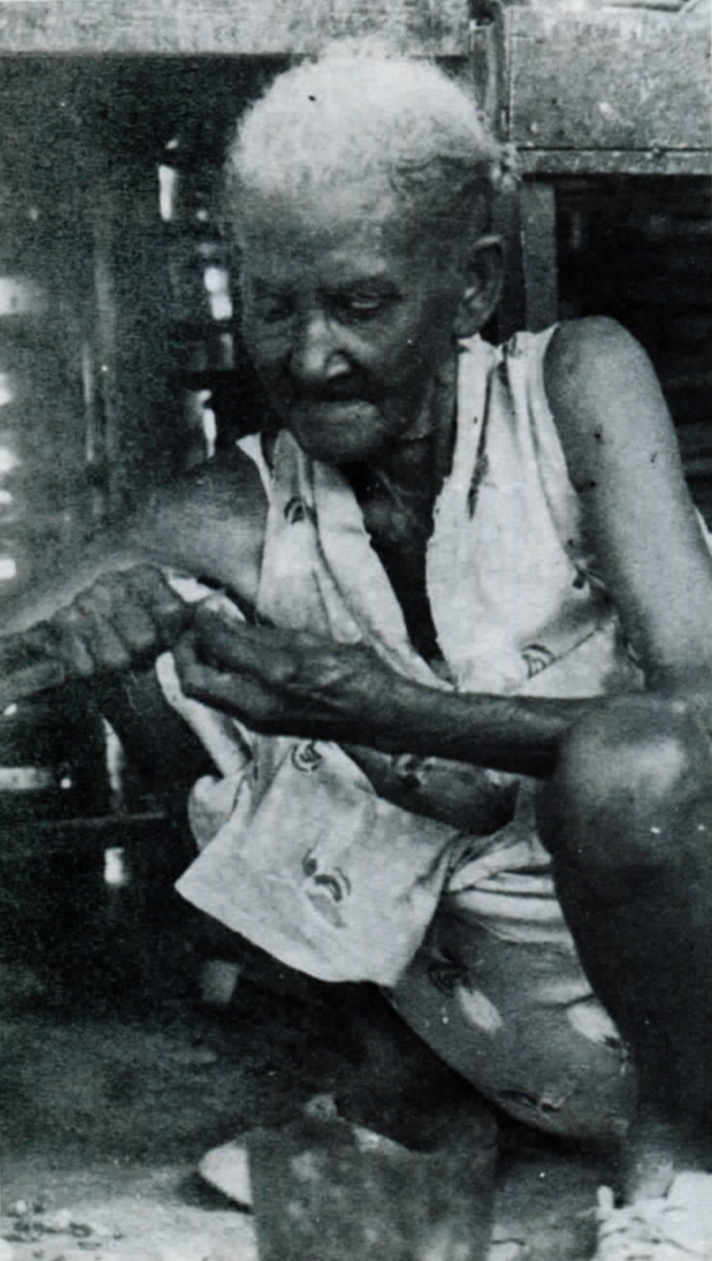
- To promote the active participation of women in popular organizations, as they struggle for their specific demands and for more general demands such as better living conditions, jobs, health services, and the like.
- To promote self-management for women's groups.
- To help these groups establish connections with one another.
- To support the efforts of the urban popular organizations.
- To assist the groups in defining their objectives and methods of work.
Educational programs undertaken by In Defense of Life include meetings for joint reflection, courses, workshops, and talks, covering such topics as:
- Feminist theory
- Popular education
- The situation of women
- Women and economic crisis
- Women and motherhood
- Violence against women
- Women and political participation
- Women and work
- Method and techniques for working with women
All of the materials used in this work are easy to understand, in terms of both the topic and the way the materials are meant to be used. We try to keep our resources as simple as possible so that they can be used very broadly without special instruction. The materials we have used include videos, slideshows, picture books, handouts, displays, booklets, notebooks, and guides to method. We have also used materials prepared by other institutions, both Dominican and foreign—especially videos, slideshows, and films.
Implementation of the Project
Our first step in establishing ourselves in this area of work was to make direct connections with popular organizations in the barrios of Santo Domingo. To this end, we began by preparing a list of all the existing groups. This work was based on available information, supplemented by consulting people who worked with organizations in the barrios.
Next we informed the leadership of all these organizations about the existence of the project, inviting them to a meeting to get to know the project and its areas of work, as well as to hear their suggestions for how the project should take shape.
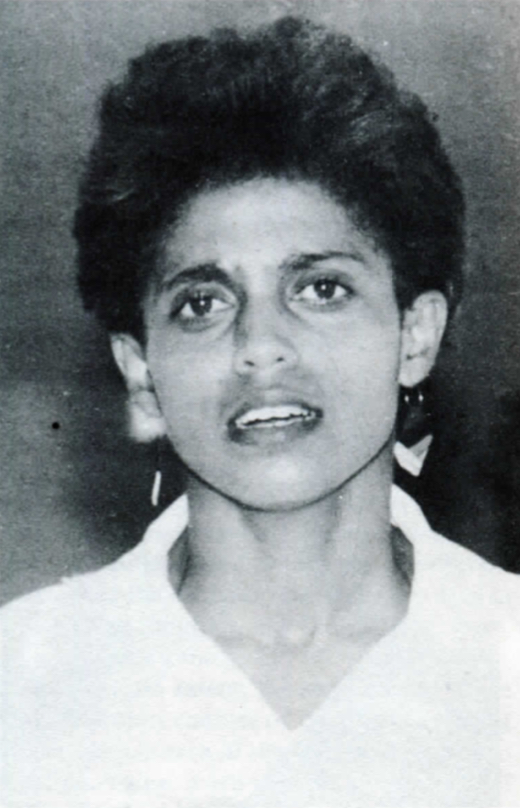
This meeting took place but not enough organizations participated to allow it to accomplish what it had set out to do. We turned then to direct contact with the organizations through visits and meetings with the various coordinators or leadership teams. Both of these approaches were complementary in helping us to establish the project.
All types of popular organizations in the barrios were approached. We have worked with women's groups, cultural or sporting clubs, committees for popular struggle, Christian base communities, student associations, popular education and communication groups. In general, any women's or mixed organization is a good context for this work.
The relationship established with these groups is one of collaboration and interchange. Often the groups themselves initiate educational activities or campaigns for a particular demand; in other cases they are responding to a suggestion from the CIPAF team. Proposals that arise from the team become part of campaigns or days of action on such themes as International Women's Day, the Day Against Violence Against Women,* women and motherhood, solidarity with Nicaragua, and the like.
* This day is observed by women's movements throughout Latin America on November 25.
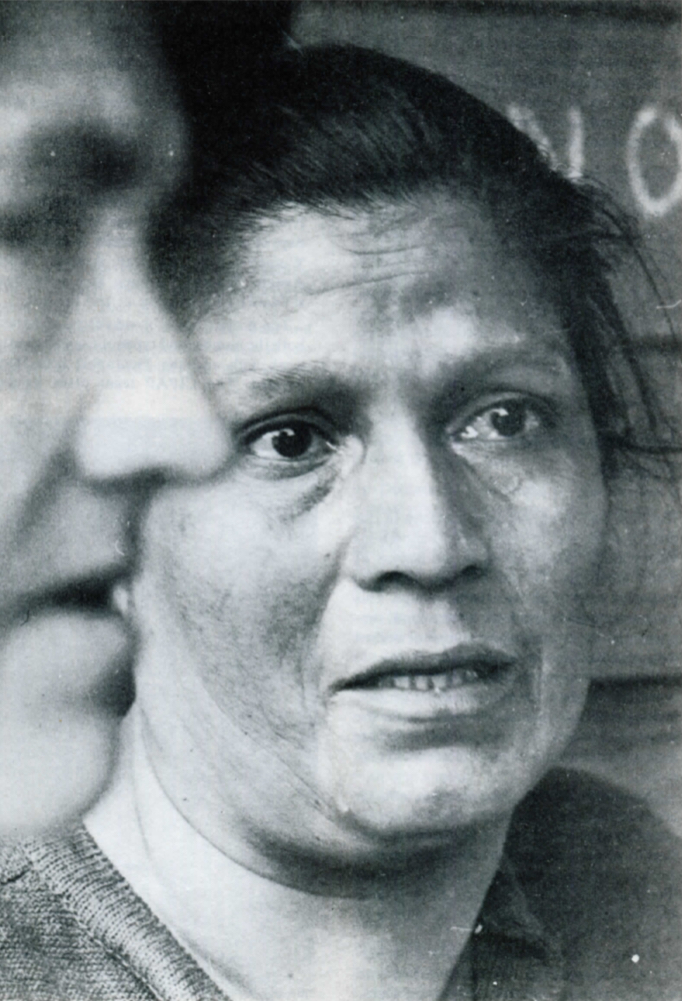
The project has a broad reach, in terms of both the number and types of organizations we work with and the geographic area that is covered. The CIPAF team plans its work through monthly and annual sessions; plans must remain flexible so that they can be adjusted to the needs and interests of the organizations we work with.
Plans are coordinated in conjunction with the leadership of the groups or members of the leadership body. The activities are open to all members of the organizations; depending on the type of activity, some programs are geared to leaders, while others may be directed to specific sectors such as women workers, women and men together, youth, and so on.
In its first year the Defense of Life project was divided into four areas of work: collaboration and interchange with the urban popular movement, research into women and their daily lives, theoretical work on synthesizing perspectives on women and the urban popular movement, and research and design of methods of working with women.
In addition to the types of educational programs described above, the first area—collaboration and interchange—also included the preparation of materials for use by the groups in publicizing activities on women's issues and exposing the most serious problems of the barrio; assistance in forming new women's groups; participation in cultural activities and days of protest; and distribution (on loan) of audiovisual materials and projectors.
The second area, research on women and daily life, consisted of a small pilot study on the lives of women in the barrios. Using women's testimony, a video was developed entitled "Women and the Crisis." A book of women's testimonies on the same theme is currently in preparation.
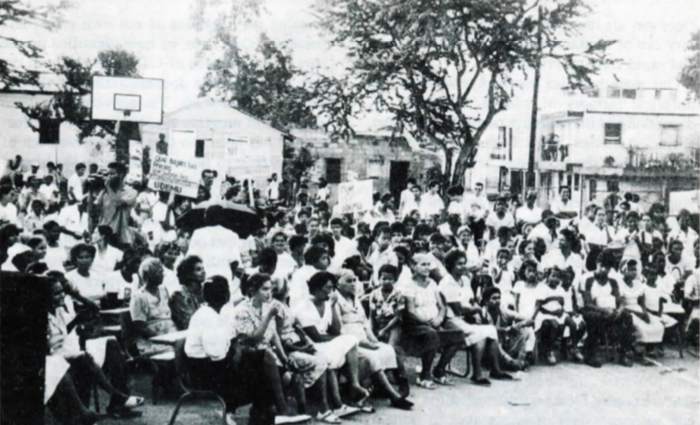
In the third area of theoretical work, team members surveyed a wealth of printed material on urban social movements and women's participation in them. This survey formed the basis for an annotated bibliography on this theme, as well as a book of selections entitled Women in the Urban Sector.
The fourth area, work on method, focused on the methods developed by those groups that we have collaborated with most closely. We researched the methods that have been used in other Latin countries, like Chile, Brazil, Peru, Ecuador, and others.
To a certain extent, the continuation of the overall project consists of the follow-up being undertaken in each of these areas, especially in methodological work and the preparation of educational materials. With respect to the methodological work, through our collaboration with groups in the barrio, we can experiment with different methodological approaches. Once they are found to be successful or positive, they can be used in other groups after a short and rapid training process.
Our work has also involved reclaiming the historical memory of women, by means of discussion and the collective participation of the group. Activities have been developed on women and the economic crisis, including neighborhood and area meetings. In certain provinces in the interior, we have brought women together to analyze the factors that are most central in women's experience and to search for alternative solutions. Theoretical work on issues of the urban popular movement will also continue.
Future preparation of educational materials will fall into two categories. The first of these is the production of materials required for a current project—illustrated handouts and leaflets that are needed for a particular situation or that commemorate days of importance to women (March 8, November 25). The second category is materials for education and training, including booklets, books, audiovisuals, videos, and so on, on different aspects of the situation and problems or urban poor women.
Evaluation
As we have sought to put the Defense of Life program into practice, we have encountered obstacles as well as factors that have facilitated our efforts. The most important obstacles have been the prejudice against feminism—especially the idea that feminism is a divisive influence on the popular movement—and the fragmentation and sectarianism of the popular organizations themselves. One of the most important elements that has facilitated our work has been the interest that has awakened in the popular movement and its organizations in the issues of the urban crisis. Another important factor has been the political situation of the country in recent years, characterized by a greater democratic opening that has made possible the work of the popular organizations and their mounting struggles for economic and social demands.
Our evaluation has also been internal, addressing the questions of our own errors and successes. One error we have identified on the part of the Defense of Life team has been the lack of systematic documentation of the experience of our work. The activities have been recorded in monthly reports, but much information has been lost that would have been of great interest to those interested in the history of the project and in the urban popular movement in general.
As for our successes, we consider it to be an achievement that our educators have developed connections with the popular movement and that they live in the barrios where they work. We are pleased with the internal division of responsibility in our team, by geographic team and type of work, taking into account the strengths of each team member. Finally, we feel that we have been able to break down some of the prejudice against feminism through the educational work we have done to present its basic principles and insights.
CIPAF
Apartado Postal 1744
Santo Domingo
Republica Dominicana
Notes
- De la Cruz, Graciela, "Las auxiliares de enfermeria: Amas de casa y Servidoras Publicas" [Aids to health care: housewives and public servants], academic thesis in sociology.
- Dominican Workers Party (PTD), "Situacion Politica de la Republica Dominicana y sus Perspectivas" [Perspectives on the political situation of the Dominican Republic).
- Ibid., p. 23.
- Ibid., p. 27.
- Hernandez, Angela, "Perfil socio-cultural de los barrios populares de la ciudad de Santo Domingo" [Sociocultural profile of the poor neighborhoods of Santo Domingo], unpublished paper.
- PTD, op. cit., p. 275.

